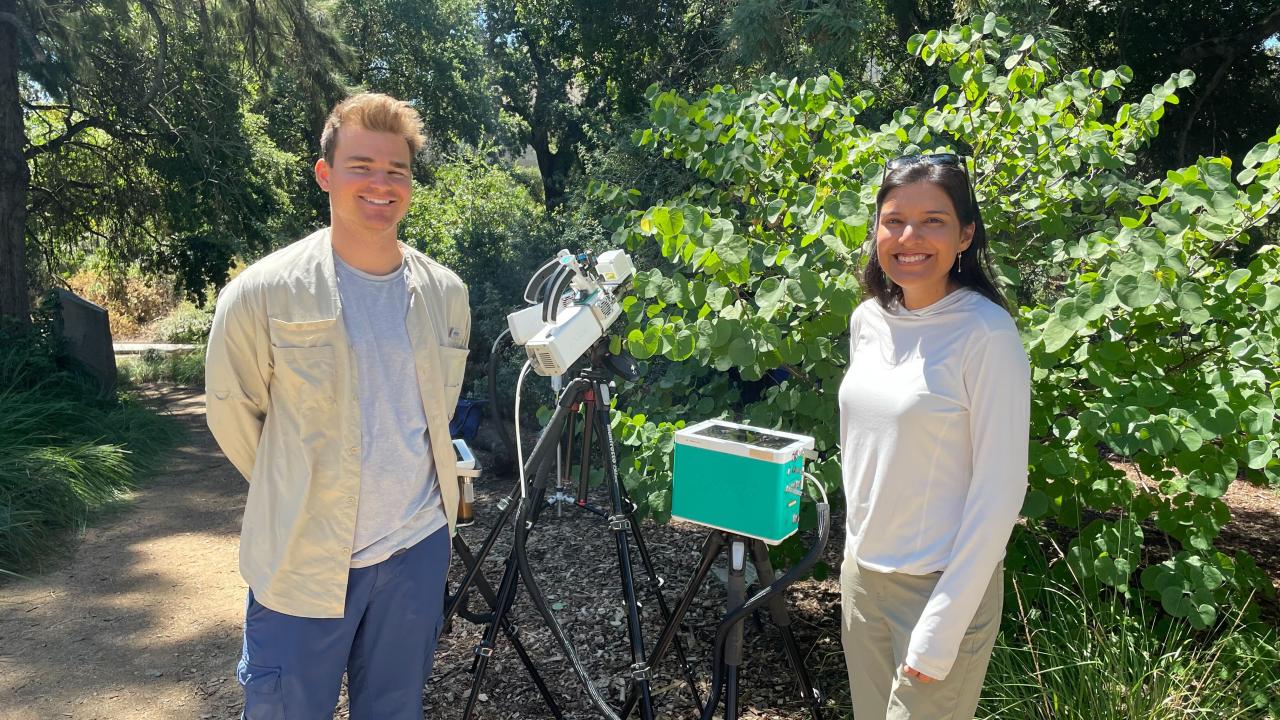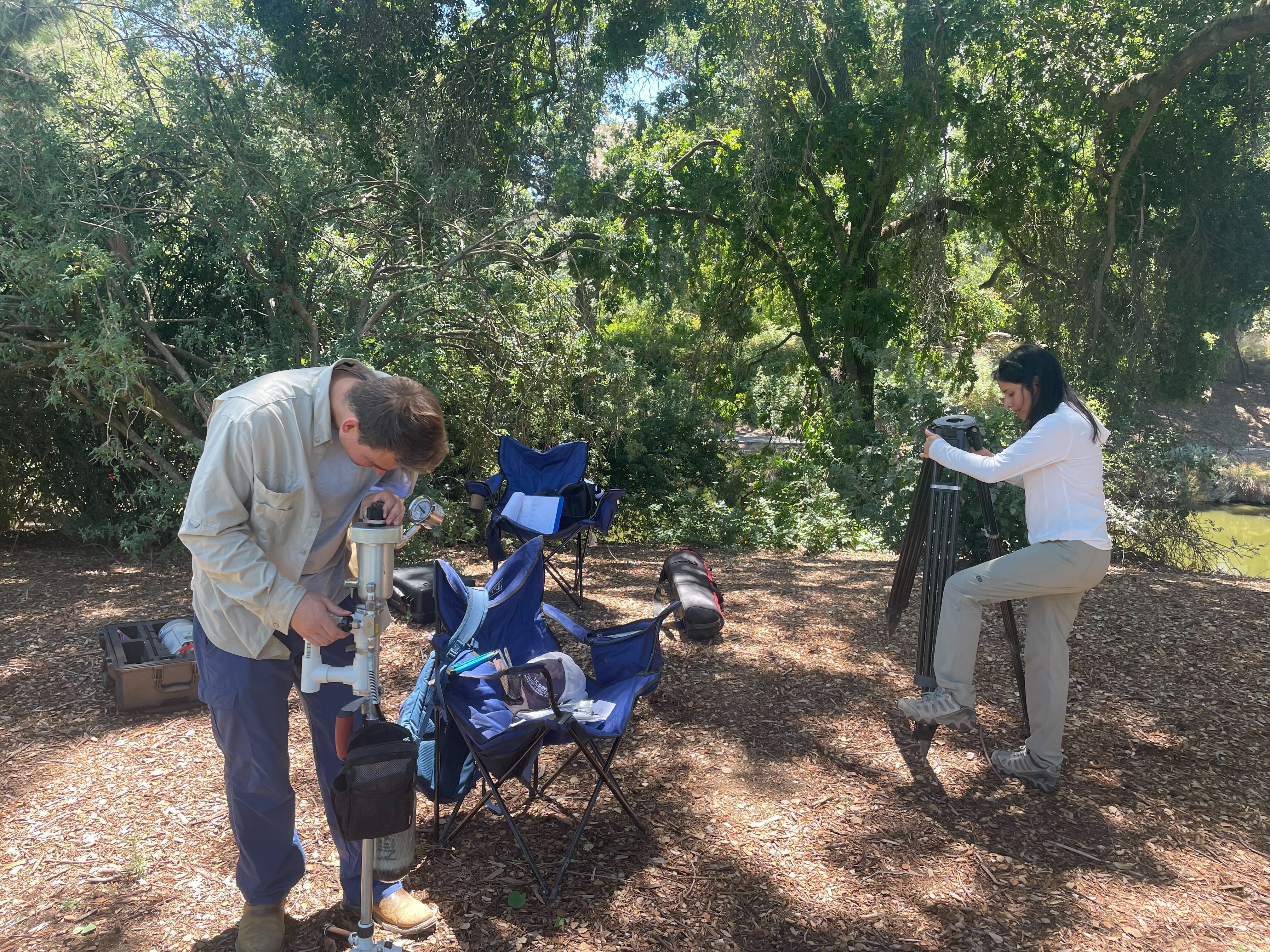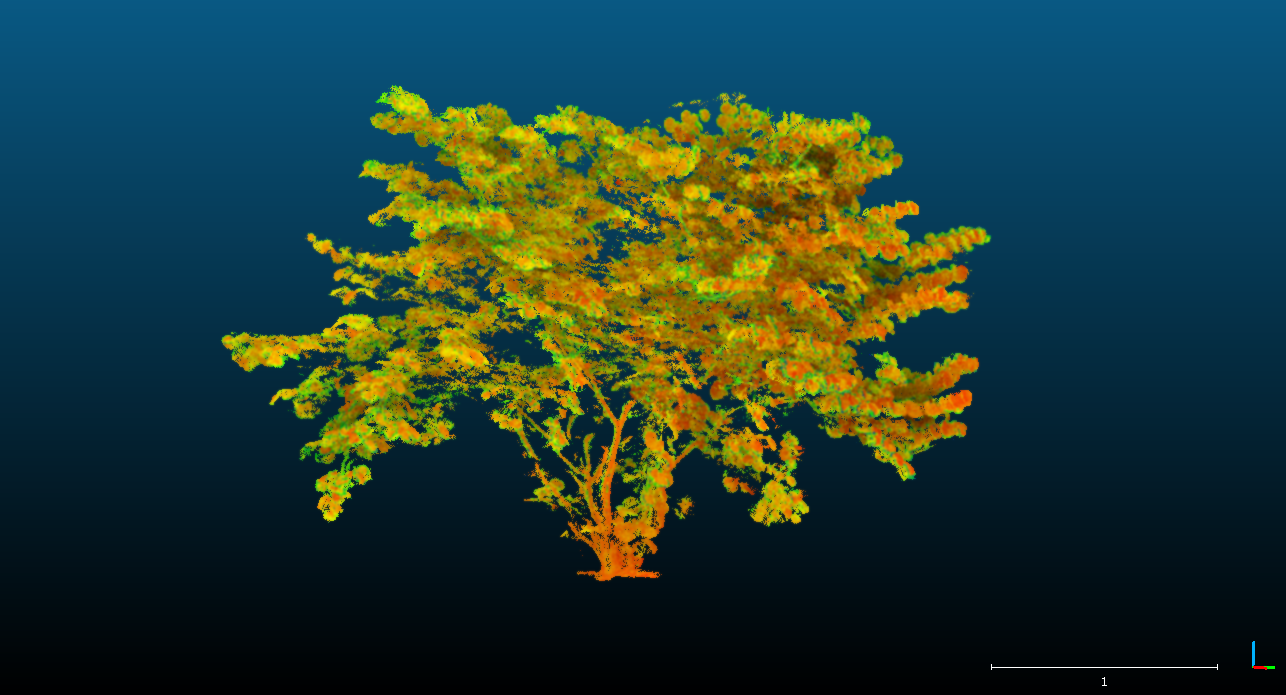
Graduate Researchers Look to Thirsty Trees in the Arboretum for Climate Change Solutions
Summer can be the busiest season for some graduate students and postdoctoral scholars, especially those whose research relies on a quintessential summer staple: hot weather.
Postdoctoral scholar Alejandra Ponce de Leon, Project Scientist for the Bailey Lab and the USDA-ARS SAWS unit, and Kyle Rizzo, a Ph.D. student in the Bailey Lab, have been utilizing a hot spot close to home: the UC Davis Arboretum and Public Garden. We spoke with Kyle to see how this campus resource is powering their research.
What impact will this research have?
|
|
|
What are you working on this summer?
Kyle: We work in Brian Bailey's Lab (Plant Simulation Lab) in the department of Plant Sciences. We are doing research for an NSF CAREER grant that is titled "Linking canopy structure and function in plant water-use economy". We are particularly looking at the physiology and daily water use of this Western Redbud tree.

How are you conducting this research?
Kyle: We're performing the typical suite of LICOR gas exchange measurements that informs the models out there for stomatal conductance — and thus transpiration and photosynthesis. This helps us characterize and predict this tree's water use and growth over time in specific environmental conditions.

Water use and growth are intimately linked since the CO2 for growth comes in the same hole (stomata) that water vapor escapes. It’s an unfortunate tradeoff plants have to deal with — and they do.
There's a general trend of plant water use throughout a day but species also have their own habits that set them apart. We're trying to better understand how these unique habits work in tandem with the growth habits of these plants. How are they branching and where are they placing new leaves? At what angles? Are they setting themselves up for an aggressive or conservative water use strategy? We use a 3D imager called LiDAR to help us reconstruct plants in 3D on the computer and quantify these structural habits.
How does having the Arboretum so close help you conduct your research?
Kyle: Our lab typically does this work in perennial cropping systems like almond and grape, but we are focusing this project on California natives. The Arboretum is providing us a wonderful testing ground for some of these natives to see which would be good candidates for going out and measuring in their natural habitat. From the seven-minute walk from our lab, to the abundance of shade provided, and the blue heron we got to watch hunt its next meal out of the water, the Arboretum is one of our new favorite sites to do our research!
Photo credit: Stacey Parker
